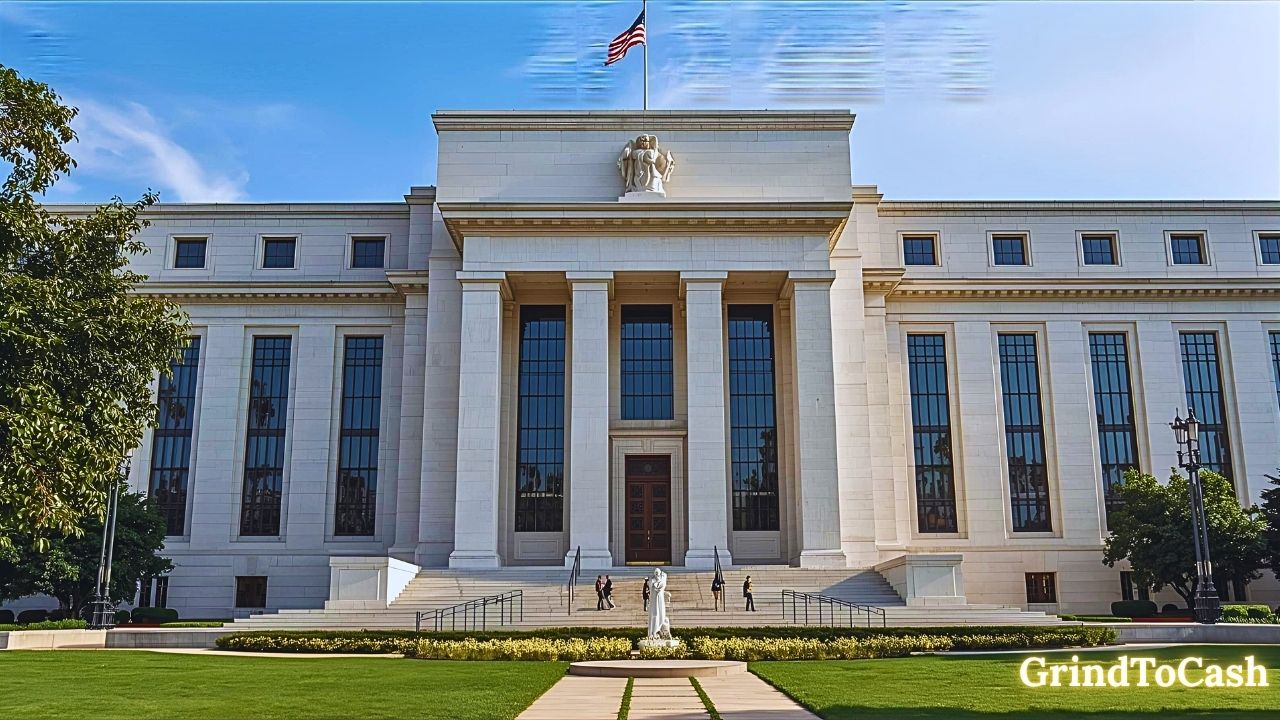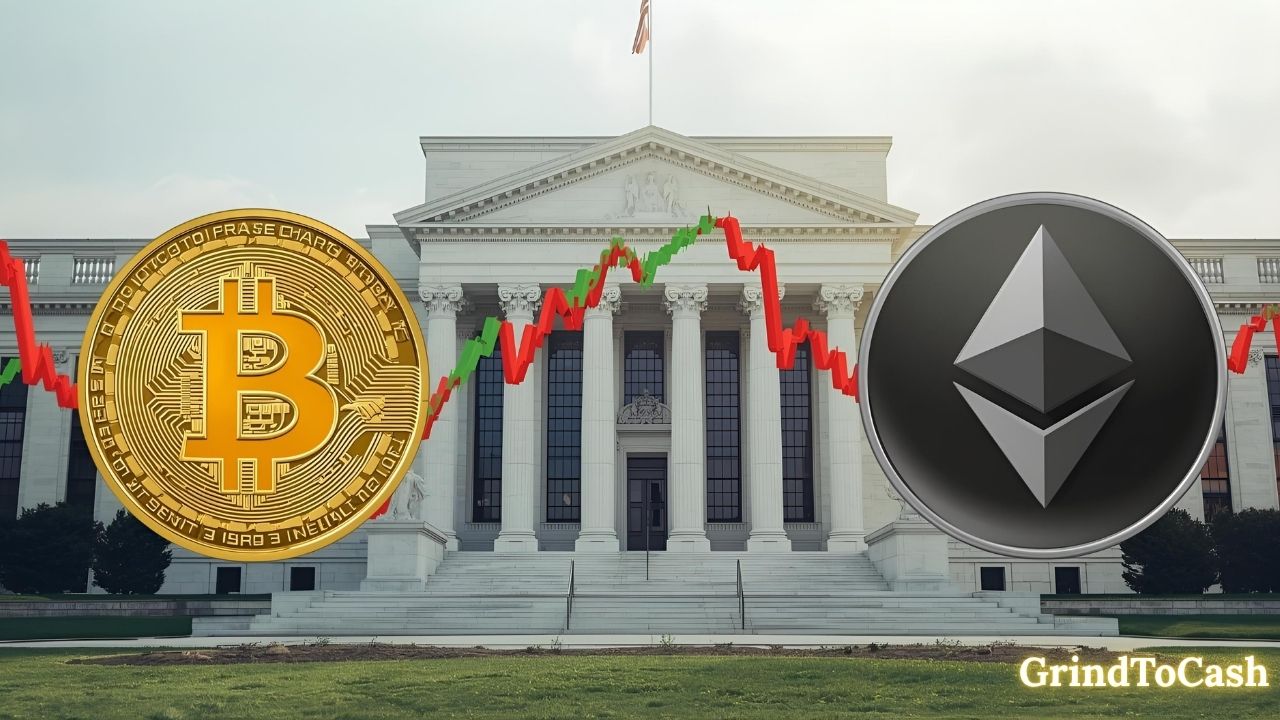October 2025 Fed Update: What You Need to Know Today
Get the latest October 2025 Fed update and discover key decisions that could move markets today. Stay informed and ahead as an investor.
By Yaser | Published on October 7, 2025

When the Fed Meets — Timing & Why It Matters
The Federal Open Market Committee (FOMC) will hold its next policy meeting on October 28–29, 2025. This two-day meeting ends with a policy statement and a press conference that markets watch closely because the Fed can change the federal funds rate and update its economic outlook. The timing matters now more than usual because the Fed has already cut rates in September and markets are pricing further moves. Traders, bond desks and crypto desks will all be listening for language about future cuts, inflation risks, and data dependence.
Key meeting dates and the schedule
Why October matters after September cutsMarketers and traders should mark Oct 28–29, 2025 on their calendars. The official statement usually comes at the close of the meeting, followed by Chair Powell’s press conference. These releases often move stocks, bonds and FX within minutes, so being ready for that window is crucial. The Fed’s calendar is public and shows the exact timing for press events and any related publications.
Why October matters after September cuts
September’s quarter-point reduction reset market expectations. Because the Fed already eased in September, the October meeting is now read as either confirming a new easing path or pausing to watch incoming data. In short, October will tell markets whether September was the start of a sustained easing cycle or an isolated move. That signal affects liquidity, risk appetite, and short-term positioning.
Practical timeline for readers and traders
If you are trading, set alerts for the statement and Powell’s press conference. If you manage content or community updates, plan a short explainer post immediately after the Fed’s announcement. For longer research, expect follow-up analysis in the 24 hours after the meeting as market reaction and Fed minutes (later) give fuller context.

The Current Policy Backdrop — Where We Stand Today
The Fed cut the target range by 25 basis points in mid-September, moving the funds rate to the 4.00–4.25% range. That change reflected the central bank’s judgment that cooling job dynamics and changing inflation trends warranted easier policy. Since then, the conversation inside the Fed has been about the pace and size of any additional cuts. Investors now expect more easing later in the year, but Fed officials remain data-dependent and cautious.
What the September cut changed for markets
The September cut shifted markets from “will they cut” to “how fast and how far.” As a result, bond yields adjusted lower, and risk assets quickly re-priced to a lower-for-longer policy path. However, that repricing depends heavily on incoming data; if inflation or jobs surprise on the upside, the Fed may temper cuts. Thus, the September move is an important baseline, not a final plan.
Powell’s messaging — cautious and data driven
Chair Powell has emphasized a data-driven approach: the Fed will look at incoming labor and inflation indicators before committing to a series of cuts. Powell and the FOMC tend to prefer gradual moves unless there is clear evidence of weakening activity. So, expect language that stresses “assessing incoming data” and “balance of risks” in October’s statement.
Why this backdrop matters to everyday readers
For savers, borrowers and crypto holders, the baseline matters because it sets borrowing costs and liquidity. Lower rates can reduce loan costs and lift risk assets, while higher or unchanged rates keep yields attractive for safe assets. Therefore, the Fed’s posture — whether leaning toward steady cuts or caution — changes real choices for consumers and investors.

Key Economic Data to Watch Before the Meeting
The Fed will weigh the latest indicators: payrolls, unemployment, CPI and PCE inflation, retail sales, and consumer-sentiment measures. Importantly, a partial federal data freeze tied to budget or administrative disruptions has complicated the picture recently, which means the Fed and markets will also look at private-sector and alternative data (for example, ADP payrolls or PMI surveys). In short, any surprises in jobs or inflation will be the main drivers of the Fed’s October choice.
Labor market signals — payrolls and unemployment
Payroll reports and the unemployment rate are central because they speak to wage pressure and demand. Cooling payroll growth would strengthen the argument for more cuts; stronger-than-expected jobs data could push the Fed to slow easing. Given mixed signals lately, markets treat each monthly jobs release as a high-impact datapoint.
Inflation measures — CPI and PCE to the fore
The Fed focuses on the PCE index for its inflation target but watches CPI closely too. A downward trend in core PCE or CPI would give the FOMC cover to cut more aggressively. Conversely, a rebound in services inflation or broader price pressures would reduce the odds of near-term easing. Expect careful language about both headline and core measures.
Alternative and private data due to reporting gaps
Because some official datasets may be delayed or affected by administrative issues, the Fed and markets will also consider private indicators like ADP jobs, ISM/Purchasing Managers’ Indexes, and real-time financial signals. These alternative sources help policymakers form a clearer picture when government figures are incomplete or noisy.

Fed Internal Debate — Who’s Pushing to Cut and Who’s Cautious
There is a visible split among Fed officials. Some, like Governor Stephen Miran, argue for faster and deeper cuts citing calm bond markets and easing inflation pressures. Others, including regional bank presidents such as Jeff Schmid, emphasize that policy appears appropriately calibrated and urge caution to avoid reigniting inflation. This division means the October statement will be carefully worded and that the vote could be close on the question of further easing.
Voices pushing for faster easing
Officials favoring quicker cuts point to cooling labor indicators and softer price momentum. They argue that easing now supports hiring and reduces recession risk. If these voices persuade a critical mass, the Fed could signal a clearer path of rate cuts in October and beyond. Markets tend to react positively to such dovish shifts.
Voices urging caution and vigilance
Officials urging caution highlight persistent services inflation and the risk of inflation re-acceleration. They worry that cutting too fast could force the Fed to reverse policy later. This camp tends to prefer small, data-driven steps rather than aggressive easing. Their stance is why the Fed often uses careful “balance of risks” language.
What the split means for the statement and press conference
A divided committee typically produces a wording that emphasizes “watching incoming data” and “assessing risks.” At the press conference, Chair Powell’s tone will be decisive for markets — a dovish Powell can send markets higher, while a cautious Powell can tighten financial conditions quickly. Therefore, the press conference matters almost as much as the vote.

Market Expectations — Prices and Probabilities
Markets are currently pricing a high probability of a 25-basis-point cut at the October meeting. Tools like the CME FedWatch show the odds moving strongly towards a quarter-point reduction. Major banks and research houses have shifted their forecasts to include an October cut and possibly another in December, reflecting weaker labor signals and an easing of inflation pressures. Still, probabilities can flip if incoming data surprises.
What the market-implied odds say right now
Futures markets incorporate traders’ expectations and, at the moment, show a very high chance of a 25bp cut in October. These instruments react quickly to new data and remarks from officials. Traders should monitor CME FedWatch and futures prices for minute-by-minute signals of shifting odds.
Bank and analyst forecasts — consensus shifting to cuts
Many research teams now expect at least one more cut this year. Their models consider unemployment trends, consumer spending, and inflation momentum. If their forecasts hold, the Fed’s October move will likely be another quarter-point easing, with further adjustments possible depending on December data. However, forecasts vary by institution and shift fast.
How traders should interpret probabilities
High market odds of a cut do not guarantee the Fed will act as priced. Markets sometimes over- or under-react to early signals. Use probabilities as a guide, not a certainty. That means planning for both the expected outcome and surprise scenarios, and sizing positions accordingly.

Likely Scenarios & Their Immediate Effects
Scenario A (base case): a 25bp cut. That outcome would likely push Treasury yields lower, boost equities, and weaken the dollar a bit — all of which can lift risk assets including crypto. Scenario B (no cut): markets could sell off and yields could rise as traders re-price expectations. Scenario C (bigger cut or aggressive dovish guidance): that could spike risk appetite and lead to rapid moves in risky assets and FX. Each scenario unfolds quickly, so short-term traders must plan exit and stop levels.
Base case: 25bp cut and “steady easing” language
If the Fed cuts 25bp and signals more cuts are likely if data soften, markets will interpret it as a clear easing path. Stocks and crypto typically rally on easier financial conditions, while long-term yields fall. That said, the size of the move depends on how “committed” the Fed sounds.
Alternative: Fed holds steady or signals pause
If the Fed holds rates or signals a pause, markets that have priced in cuts may suffer a re-pricing. Stocks could dip, the dollar might strengthen, and rates could tick up. This scenario is riskier for leveraged positions that assumed immediate easing. Hence, risk managers must consider quick hedges.
Aggressive dovish surprise — large market rallies and volatility drop
A more dovish surprise — for example a promise of a faster cut path — would likely trigger a sharp rally in equities and a strong move into risk assets, while safe-haven assets like Treasuries and the dollar could weaken sharply. Such a scenario often reduces implied volatility across asset classes but creates rapid repositioning needs.

What This Means for Crypto & DeFi — Practical Implications
Crypto tends to respond to macro liquidity and risk appetite. An easing cycle generally supports higher prices for risk assets, including many cryptocurrencies, because lower yields and more liquidity push investors toward higher-return assets. However, correlations vary; stablecoins, DeFi lending rates, and on-chain activity react differently. For builders and traders in crypto, it’s wise to watch liquidity, stablecoin flows, and on-chain metrics as the Fed signals policy direction.
How rate cuts can lift crypto prices — the transmission channels
Lower policy rates reduce holding costs for leveraged positions and increase risk tolerance. Additionally, weaker dollar flows can bring international capital into dollar-priced crypto. That said, crypto markets also respond to on-chain fundamentals and narratives, so macro tailwinds are necessary but not sufficient for sustained rallies.
DeFi lending, yields and risk management
In DeFi, lending rates typically fall with broader rate easing, compressing yields on stablecoin deposits and borrowing. Projects that rely on yield spreads may need to adjust incentives. For risk managers, that means watching protocol TVL flows and liquidity pools to avoid sudden fund outflows when yields compress.
Tactical steps for builders and users
Builders should plan runway and incentives assuming some degree of easier policy, while users should avoid over-leveraging ahead of the Fed event. For traders, smaller position sizes and clear stop rules are prudent because news-driven volatility can be sharp and quick. Always prioritize security and diversification.

How to Stay Updated & Practical Checklist for October 28–29
Stay informed by following: the Fed statement and Powell’s press conference, CME FedWatch probabilities, live market feeds for Treasury yields, and reliable news wires (Reuters, Bloomberg). Prepare a pre-planned checklist: (1) set alerts for the statement time, (2) reduce position sizes before the release if you prefer to avoid headline volatility, (3) have orders or hedges ready. After the announcement, wait for Powell’s Q&A for true tone and guidance, then reassess positions.
Pre-meeting checklist for traders and community managers
Set your trading platform alerts, freeze large rebalances 15–30 minutes before the statement, and prepare quick posts or updates if you run a channel. For community teams, schedule a short explainer piece to publish within 30–60 minutes after the press conference. This gives readers timely context and positions your site as a fast, reliable source.
Tools and feeds to watch in real time
Use CME FedWatch for odds, Treasury yield tickers for immediate rate reaction, and major news wires for quotes. Also follow Fed releases directly from the Federal Reserve website for authoritative text. For crypto, monitor on-chain dashboards and exchange order books to track liquidity shifts.
After the meeting — how to read the reaction
First read the statement; then watch Powell’s tone in the press conference. Markets often move more on tone and guidance than the numeric vote itself. Finally, read market commentary and central bank minutes over the next days to understand the committee’s internal views and likely path. That layered approach reduces impulsive trades and builds clarity.








